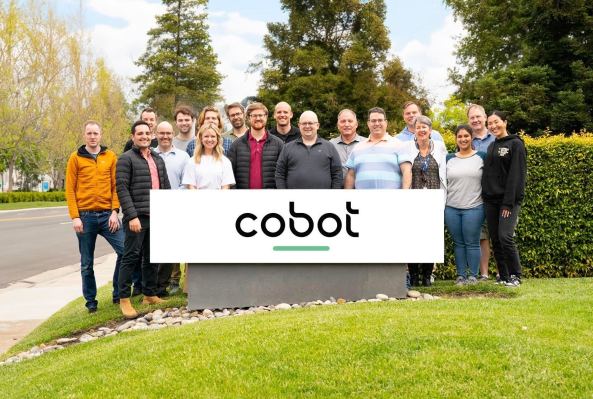A year after unveiling Collaborative Robotics, Brad Porter is still playing it close to the vest. He’s not ready show off the company’s hardware — or even describe it in too great of detail. “I’m being careful about not revealing the design,” he tells TechCrunch. “We’re not really like anything you’ve seen yet, which is why we’re being protective of it. We want to get a little further along. There’s a lot…of robots being inspired by other robots.
The last time we spoke, the former Amazon Robotics VP was working with a team of between three and five full-time employees. “At the time, we had just raised a $10 million seed and had a vision for a new type of collaborative robot,” he says of Collaborative’s beginnings a mere 13 months back. “It’s not a humanoid, but something to take on human-scale tasks. The vision has stayed the same. We are still on that mission and vision. We’ve made a lot of progress in the last year.”
Headcount has since increased to 23. Today the startup announced a $30 million Series A, led by Sequoia Capital. The company says the money will go toward “begin[ning] the process of scaling early field deployments and manufacturing of their novel cobot.”
As to what constitutes a “novel cobot,” Porter isn’t ready to say just yet. The founder only notes that, along with not being a humanoid — à la Optimus or Figure 01 — it’s also not a manipulator mounted to the back of an autonomous mobile robot.
“There are a few things our robot does that put it in its own category,” Porter explains. “It’s capable of being an assistive picking robot, but it’s more capable than that. We think a lot about what constrains a robot from being able to do something autonomously — a complete end-to-end task — and to do it productively all the time. Having experienced deploying robots in a lot of complicated environments, you run into a lot of constraints. One of them is being able to do an end-to-end task. Even in assistive picking, there needs to be a human to do the mobile manipulation. We’re focused on the movement of boxes, totes and carts — and being able to do those end-to-end.”
It’s a broader definition of “collaborative” than some are accustomed to. Here it doesn’t necessarily mean working together as much as side by side, with the robots attempting to complete as much of a given task as possible without human intervention.
While the robot and software are still very much in a state of development, Collaborative has been working with customers since its infancy, on the strength of Porter’s Amazon pedigree.
“With the news that we were starting something, people started to reach out and find us,” says Porter. “The way the demographics are shifting, it’s no longer a ‘nice to have’ or a cool technology. There’s not enough labor to do the type of work that needs to be done. Companies have been saying that they need to embrace this and figure it out, but they don’t know where to start. They found us through various channels and said, ‘Can you help us build out our approach to this?’”
Those partnerships have resulted in the creation of the Cobot Flywheel Program, which is designed to build custom solutions and help create early revenue streams as the company builds toward its more ambitious goals. Collaborative says a number of biotech, healthcare and logistics companies are on board, including the Mayo Clinic.
